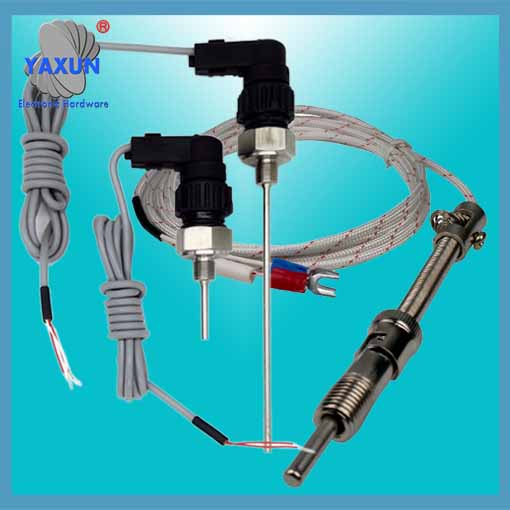Termékkategóriák
- hőbiztosíték 32
- felületre szerelhető biztosítékok 12
- termisztor 36
- PCB-re szerelhető biztosítéktartó 27
- Kábelköteg 6
- Penge biztosítéktartók 17
- termosztát 50
- Elektromos biztosíték 24
- Autóipari hőmérsékleti érzékelő 7
- Termikus áramkör megszakító 22
- Biztosítékdoboz-tartó 36
- Hőmérséklet érzékelő 75
- Hőkapcsoló 68
- Autó biztosíték 20
- Csavarja le a biztosítékokat 8
Termékcímkék
páncélozott hőelem-érzékelő gyártója
A páncélozott hőelemek érzékelői megegyeznek az iparilag összeszerelt hőelemekkel. Mint hőmérsékleti érzékelő, általában kijelző műszerekkel együtt használják, felvevő műszerek és elektronikus szabályozók. Egy időben, összeszerelt hőelemek hőmérséklet-érzékelő elemeként is használható.
What is an armored thermocouple sensors?
Armoured thermocouples are used as temperature measurement sensors and are usually used in conjunction with temperature transmitters, regulators and display instruments to form a process control system. It is used to directly measure or control the temperature of fluid, steam, gas medium and solid surface in the range of 0-1800℃ in various production processes. Armored thermocouples sensors have many advantages such as flexibility, high pressure resistance, fast thermal response time, sturdiness and durability. It is the same as an industrial assembled thermocouple, and is usually used in conjunction with display instruments, felvevő műszerek és elektronikus szabályozók.
Thermocouples sensor used internationally have a standard specification. It is stipulated that the thermocouple is divided into eight different graduations, namely B, R, S, K, N, E, J and T. The lowest temperature can be measured at minus 270℃, and the highest temperature can reach 1800℃. Köztük, B, R and S belong to the platinum series of thermocouples sensor. Because platinum is a precious metal, they are also called precious metal thermocouples. The remaining few are called cheap metal thermocouples. There are two types of thermocouple structures, common type and armored type. Ordinary thermocouples are generally composed of hot electrodes, insulating tubes, protective sleeves and junction boxes. While the sheathed thermocouple is: a thermocouple wire, the protective insulating material and the metal rear sleeve assembly combination of the three, the processing of a stretched solid combination. Viszont, the electrical signal of the thermocouple needs a special wire to transmit, and this wire is called a compensation wire. Different thermocouples require different compensating wires, and their main function is to connect with the thermocouple to keep the reference end of the thermocouple away from the power supply, so that the temperature of the reference end is stable. Compensation wires are divided into two types: compensation type and extension type. The chemical composition of the extension wire is the same as that of the thermocouple to be compensated, but in practice, the extension wire is not made of the same material as the thermocouple. Általában, it is replaced by a wire with the same electron density as the thermocouple sensor. The connection between the compensation wire and the thermocouple is generally very clear. The positive connection compensation wire of the thermocouple is a red wire, and the negative connection is connected to the remaining color wire. Most of the general compensation wires are made of copper-nickel alloy.

Páncélozott hőelemes szonda érzékelők különböző csomagokban
A páncélozott hőelemek érzékelői megegyeznek az iparilag összeszerelt hőelemekkel. Mint hőmérsékleti érzékelő, általában kijelző műszerekkel együtt használják, felvevő műszerek és elektronikus szabályozók. Egy időben, összeszerelt hőelemek hőmérséklet-érzékelő elemeként is használható. It can directly measure the temperature of liquid, steam and its gaseous medium and solid surface in the range of 0℃~800℃ in various production processes. Compared with fabricated thermocouples, armored thermocouples have the advantages of flexibility, high pressure resistance, short thermal response time, sturdiness and durability.
Because the materials of armored thermocouples are generally more expensive (especially when precious metals are used), the distance between the temperature measurement point and the meter is very long. In order to save armored thermocouple materials and reduce costs, compensation wires are usually used to extend the cold end (free end) of the armored thermocouple into the control room where the temperature is relatively stable, and connect it to the terminal of the instrument. It must be pointed out that the function of the thermocouple compensation wire is only to extend the thermoelectrode and move the cold end of the armored thermocouple to the instrument terminal of the control room. It cannot eliminate the influence of the temperature change of the cold junction on the temperature measurement by itself, and cannot compensate. Ezért, other correction methods are needed to compensate for the influence of the cold junction temperature t0≠0°C on the temperature measurement. When using the armored thermocouple compensation wire, you must pay attention to the matching of the models and the polarity can not be connected incorrectly. The temperature of the connecting end of the compensation wire and the armored thermocouple cannot exceed 100°C.
Lépjen kapcsolatba velünk
Várom az e-mailedet, belül válaszolunk 12 óra értékes információkkal, amelyekre szüksége van.
 English
English Afrikaans
Afrikaans العربية
العربية বাংলা
বাংলা bosanski jezik
bosanski jezik Български
Български Català
Català 粤语
粤语 中文(简体)
中文(简体) 中文(漢字)
中文(漢字) Hrvatski
Hrvatski Čeština
Čeština Nederlands
Nederlands Eesti keel
Eesti keel Suomi
Suomi Français
Français Deutsch
Deutsch Ελληνικά
Ελληνικά हिन्दी; हिंदी
हिन्दी; हिंदी Magyar
Magyar Bahasa Indonesia
Bahasa Indonesia Italiano
Italiano 日本語
日本語 한국어
한국어 Latviešu valoda
Latviešu valoda Lietuvių kalba
Lietuvių kalba македонски јазик
македонски јазик Bahasa Melayu
Bahasa Melayu Norsk
Norsk پارسی
پارسی Polski
Polski Português
Português Română
Română Русский
Русский Cрпски језик
Cрпски језик Slovenčina
Slovenčina Slovenščina
Slovenščina Español
Español Svenska
Svenska ภาษาไทย
ภาษาไทย Türkçe
Türkçe Українська
Українська اردو
اردو Tiếng Việt
Tiếng Việt

